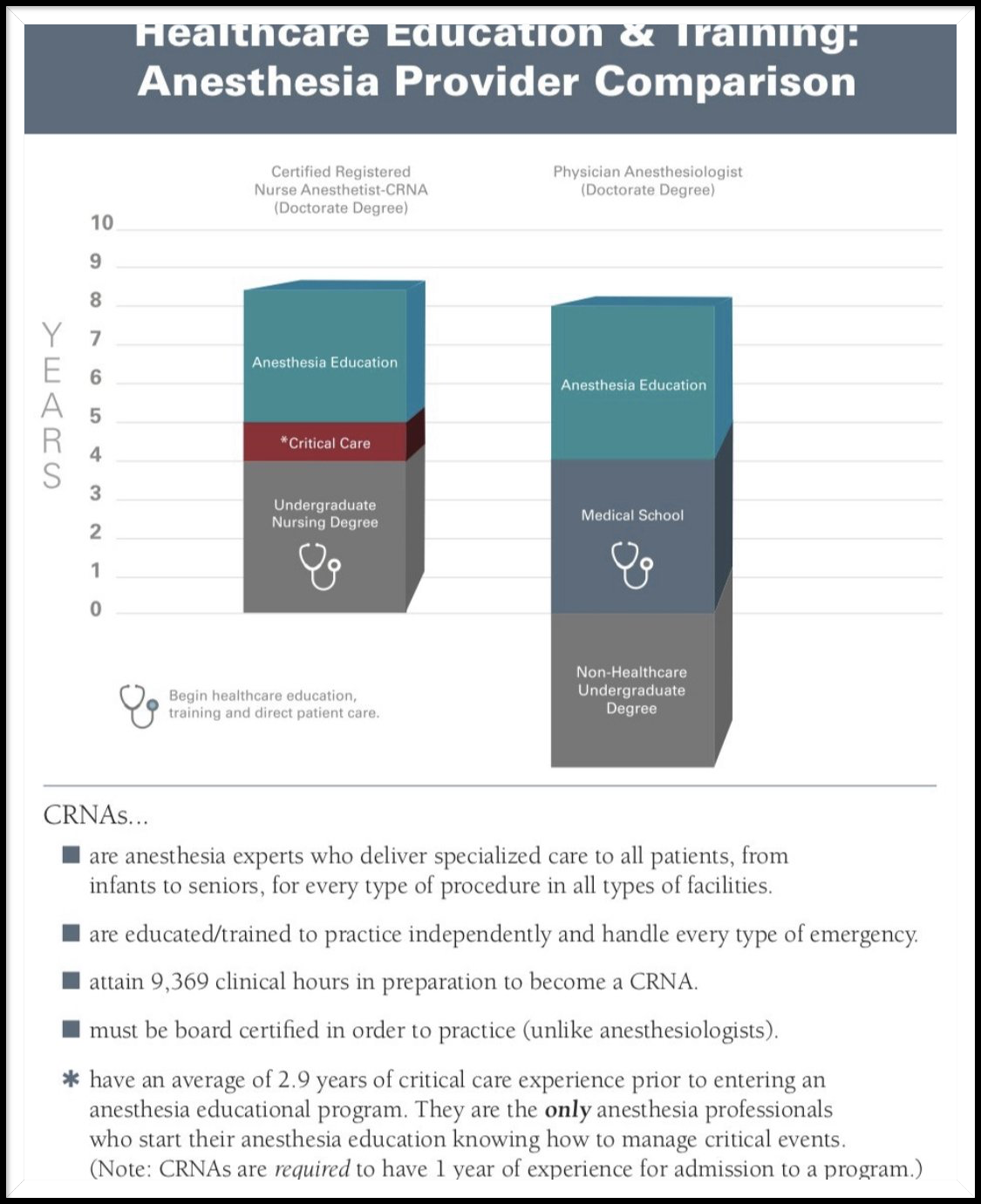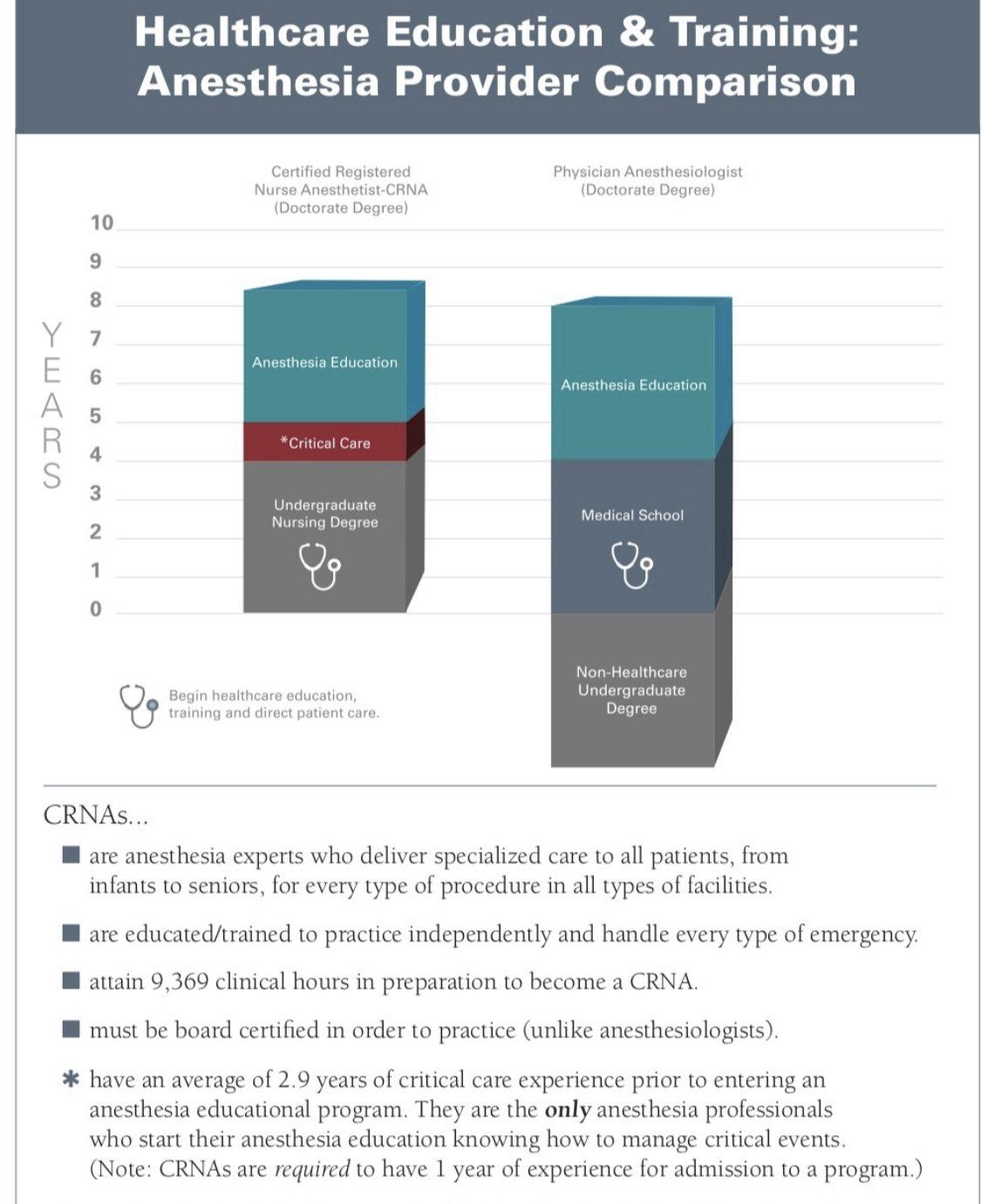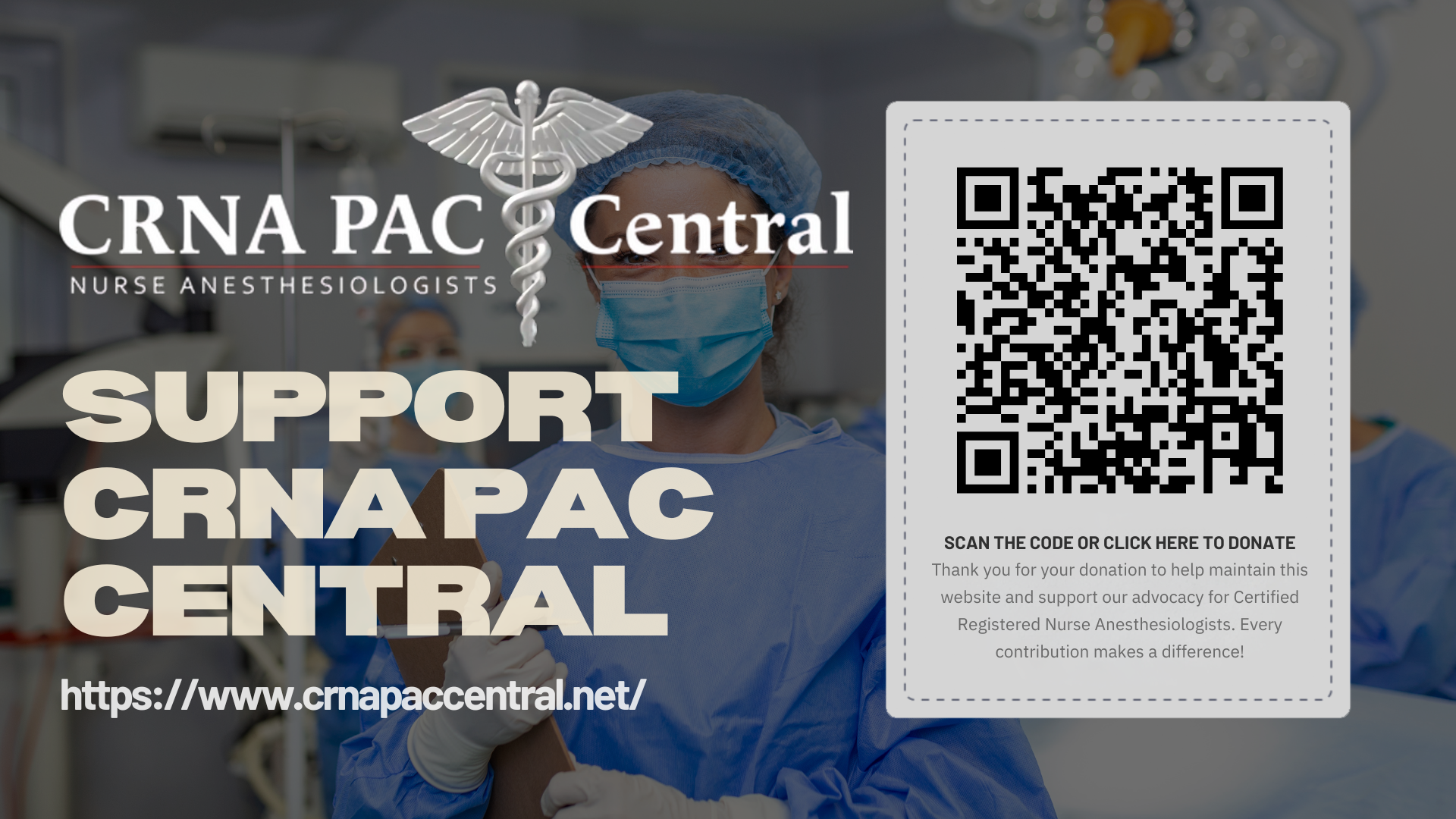Differences Between Physician & Nurse Anesthesiologists
Summary
Nurse Anesthesiologist Training
9,369 Hotal Hours

Physician Anesthesiologist Training
9,562 Total Hours
Explanation of the Math
For years our physician anesthesiologist (MDA) colleagues have skewed the data when it comes to reporting how long
their medical education takes to become an anesthesiologist and comparing that to the educational preparation of a Certified Registered Nurse Anesthetist (CRNA). For instance the American Society of Anesthesiologist’s (ASA’s) campaign “When Seconds Count...Physician Anesthesiologists Save Lives” reports that their medical education
requires up to 14 years to complete and 12,000 to 16,000 hours of clinical training “to make critical, split-second decisions that can save your life".
- They also frequently underreport the years and clinical education of CRNAs. For example in their resources for policymakers they state that “nurses” in opt-out states who are allowed to administer anesthesia without physician supervision only have a median of 1,651 hours of clinical training.
- Both of these metrics are inaccurate!
In response to these false claims the American Association of Nurse Anesthetists (AANA) and the Council on Accreditation of Nurse Anesthesia Educational Programs (COA) did their own analysis of
the education and clinical require- ments for both of these anesthesia professionals: anesthesiologists and CRNAs. A more accurate reflection of clinical hours for physicians in anesthesia residency programs was reported by the Anesthesia Quality Institute in their fourth annual edition titled “Anesthesia in the United States, 2013.”
- In this report the average hours on duty per week across the three post-graduate educational years (PGYs) were: PGY1 = 60.8 hours /week; PGY 2= 61.6 hours/week; and PGY3 = 61.5 hours/week. Doing the math
of (PGY1 × 52 weeks) + (PGY2 × 52 weeks) + (PGY3 × 52 weeks)
= 9,562.8 total hours of specialty clinical education in anesthesia.
Of course these calculations do not take into account duty hours that are not directly related to clinical care of patients, or account for any time taken off during these three years such as vacation, so the actual number is probably closer to 9,000 hours. And of course this in no measure even comes close to the claim of 14 years of preparation. Even taking into account their transitional year or 60 hours/week × 52 weeks adds an additional 3,120, total hours combined then would add up to 12,120 hours and would finally approach their estimated numbers of clinical preparation. This more accurately reflects the comparison on the CRNA Fact Sheet that is posted on the AANA website.
In contrast, CRNAs have substantial experience in a critical care environment as licensed Registered Nurses and in the nurse anesthesia educational programs, according to the National Board of Certification and Recertification for Nurse
32 AANA Journal, December 2017, online content www.aana.com/aanajournalonline
Anesthetists 2016 annual report most registered nurses have on average 2.9 years or 6,032 hours of critical care experience before entering a nurse anesthesiology program, as well as over 2,604 hours of clinical experience in their nurse anesthesiology programs, totaling 8,636 of clinical experience, which is a substantial and significant difference from the 1,651 hours that the ASA reports in their media campaign “When Seconds Count...”.
In conclusion, based on our analysis, the reporting by the ASA that anesthesiologists’ education includes 12,000-16,000 hours of clinical training is misleading because the data clearly show that anesthesiologists barely attain 12,000 clinical hours during their transitional year and residency program. In contrast, a realistic number of clinical hours for CRNAs attained relative to their nurse anesthesia education, including required critical care nursing experience and nurse anesthesia program clinical experiences, is approximately [9,360 hours]. No one is disputing that the clinical preparation for an anesthesiologist is different than that of a CRNA. However, let’s be truthful in the advertising; CRNAs have a significant amount of clinical experience before becoming a CRNA and this experience contributes to the incredible safety record and quality that CRNAs bring to the care of their patients. CRNAs are there every breath, every beat, every second!
REFERENCES
1. http://www.asahq.org/resources/patients. Accessed November 10, 2017.
2. When Seconds Count: From the American Society of Anesthesiologists. http://asahq. org/WhenSecondsCount/policymakers. aspx. Accessed November 10, 2017.
3. “Anesthesia in the United States, 2013”; Anesthesia Quality Institute, The Ameri- can Society of Anesthesiologists.
4. https://www.aana.com/membership/ become-a-crna/crna-fact-sheet. Accessed November 10, 2017.
5. www.aana.com/news/news-detail/2017/ 06/05/study-in-health-affairs-confirms- quality-safety-of-nurse-anesthetist-care. Accessed November 11, 2017.

AUTHORS
Randall D. Moore, DNP, MBA, CRNA, is the chief executive officer of the American Associa- tion of Nurse Anesthetists in Park Ridge, Illinois.
Francis Gerbasi, PhD, CRNA, is the chief executive officer of the Council on Accredita- tion of Nurse Anesthesia Educational Programs.
Bruce A. Schoneboom, PhD, CRNA, FAAN, COL(ret), ANC, USA, is the senior director, Education and Professional Development, at the American Association of Nurse Anesthetists.
DISCLOSURES
Randall D. Moore, DNP, MBA, CRNA, and Bruce A. Schoneboom, PhD, CRNA, FAAN, COL(ret), ANC, USA, are employed by the American Associ- ation of Nurse Anesthetists. Francis Gerbasi, PhD, CRNA, is employed by the Council on Accredita- tion of Nurse Anesthesia Educational Programs.

